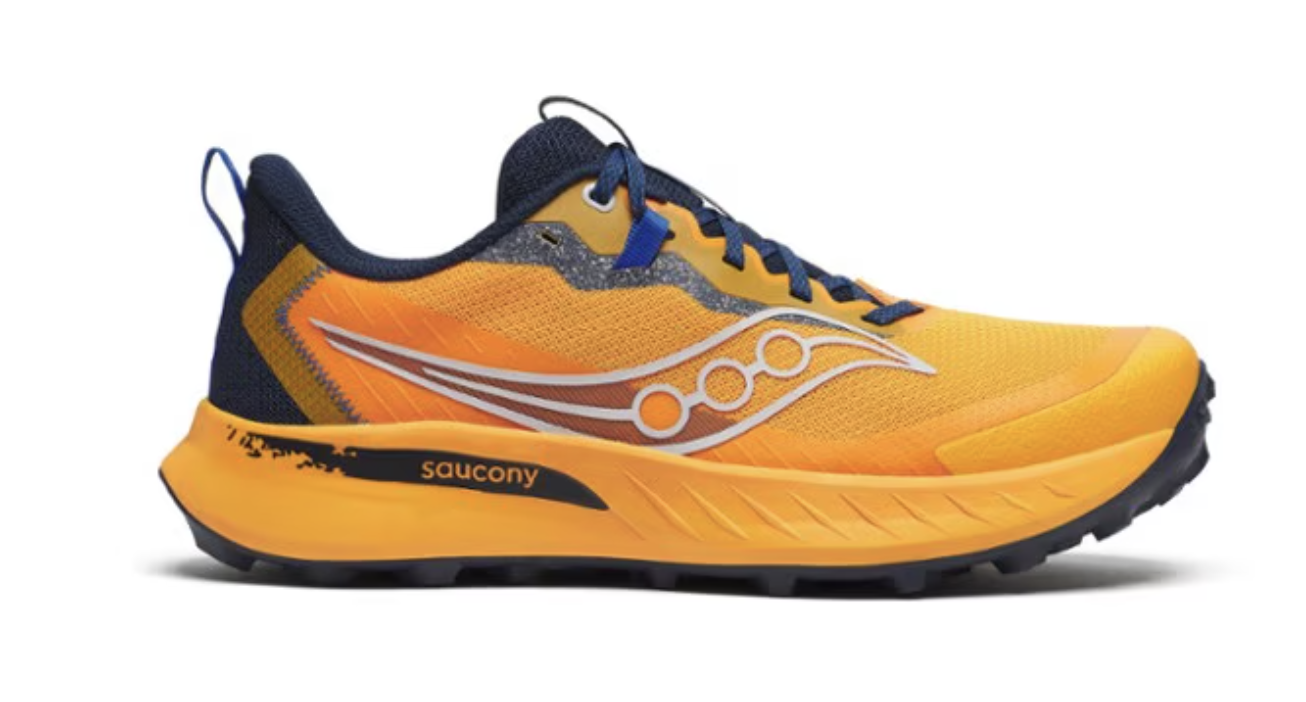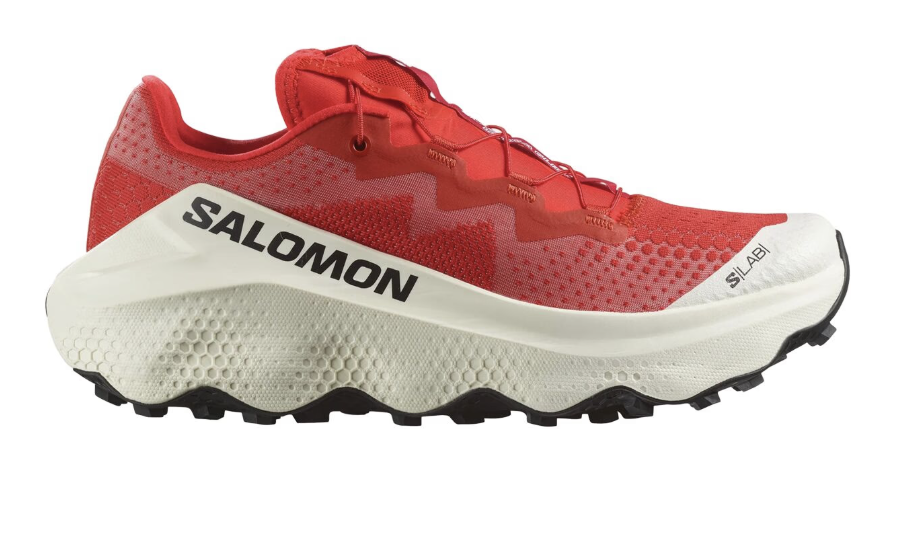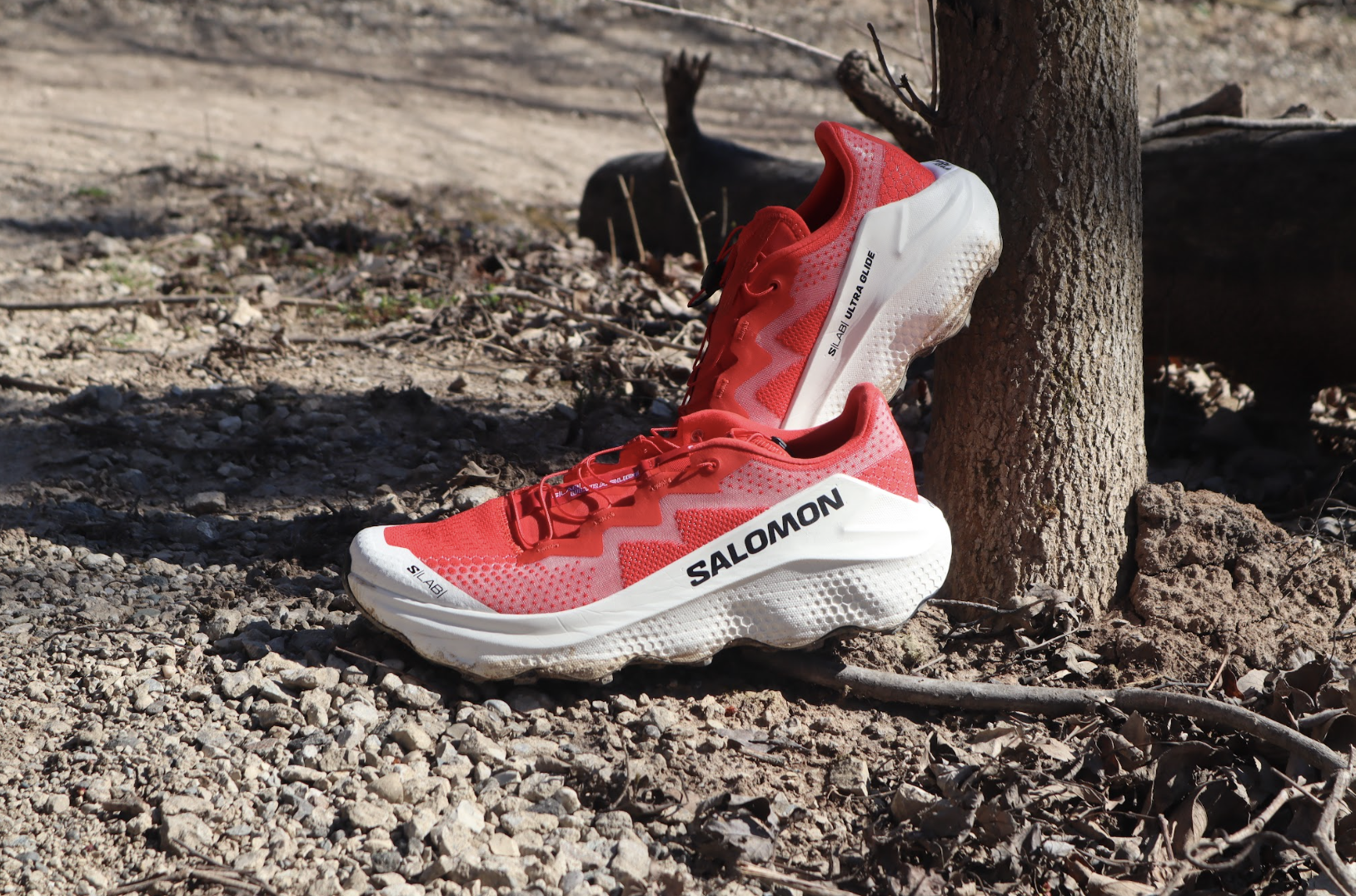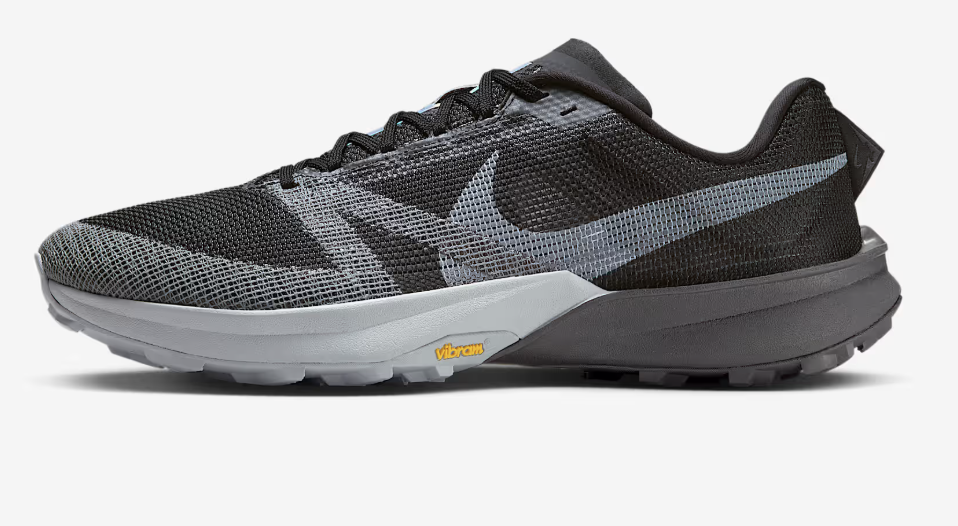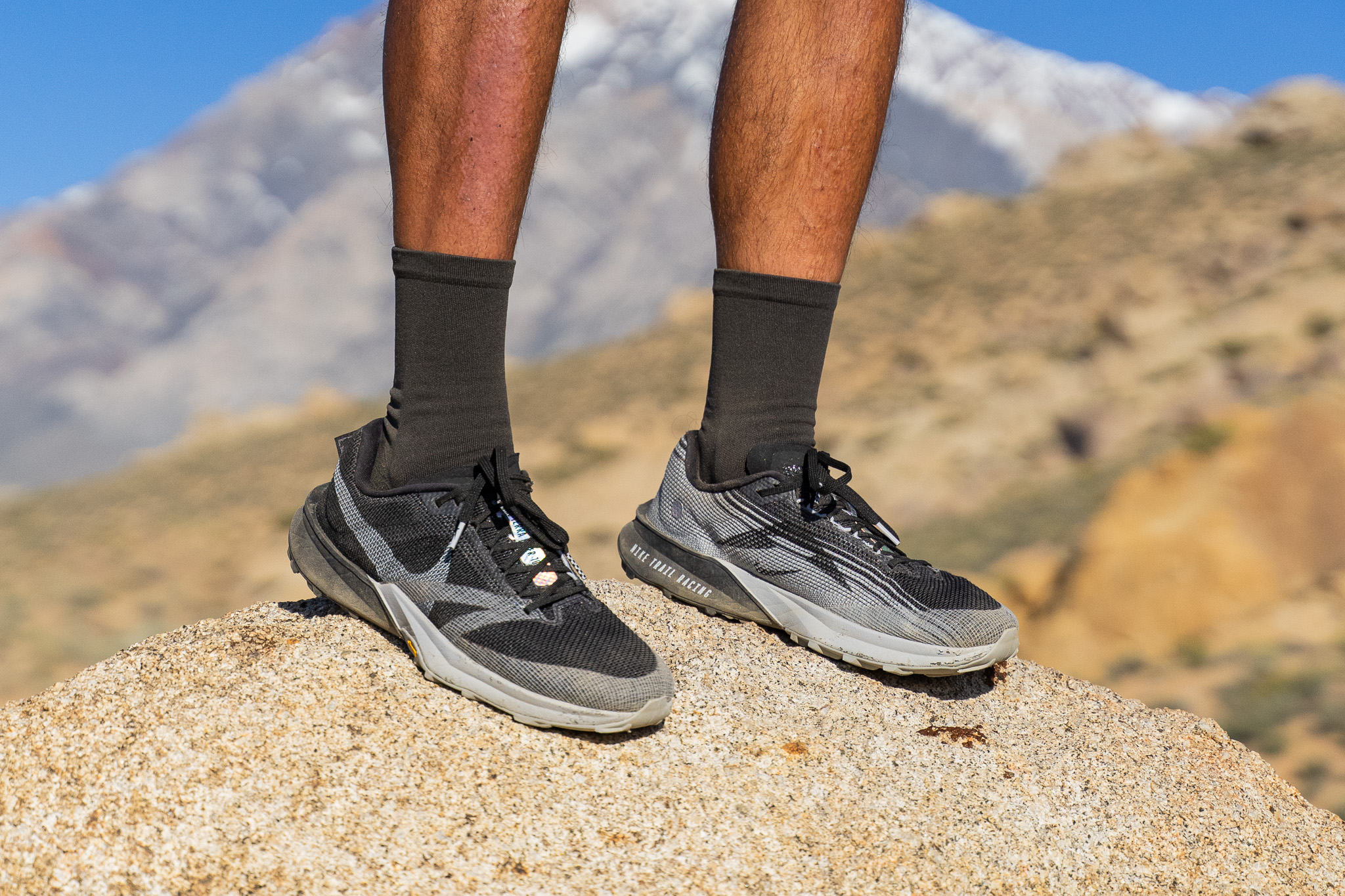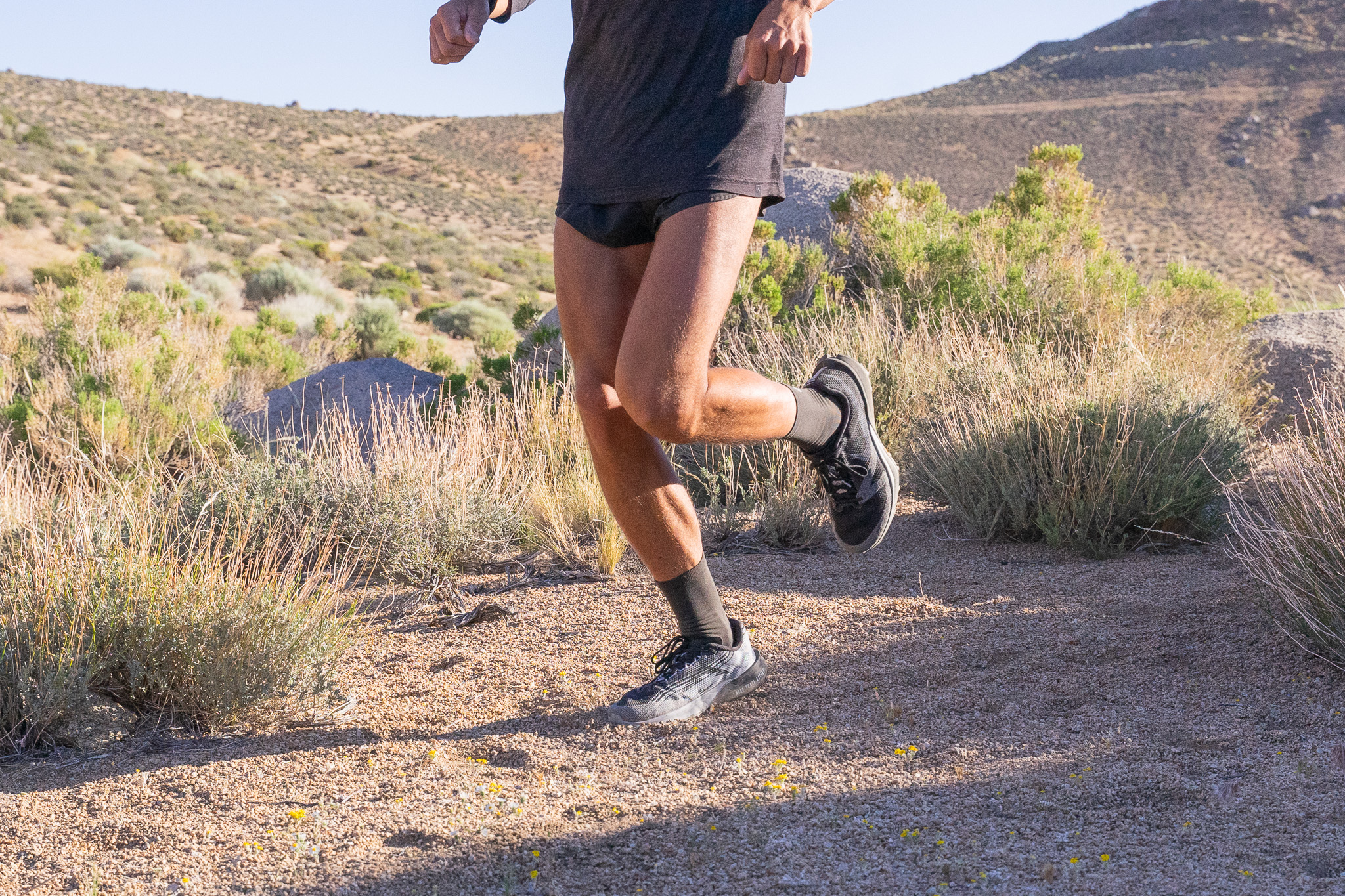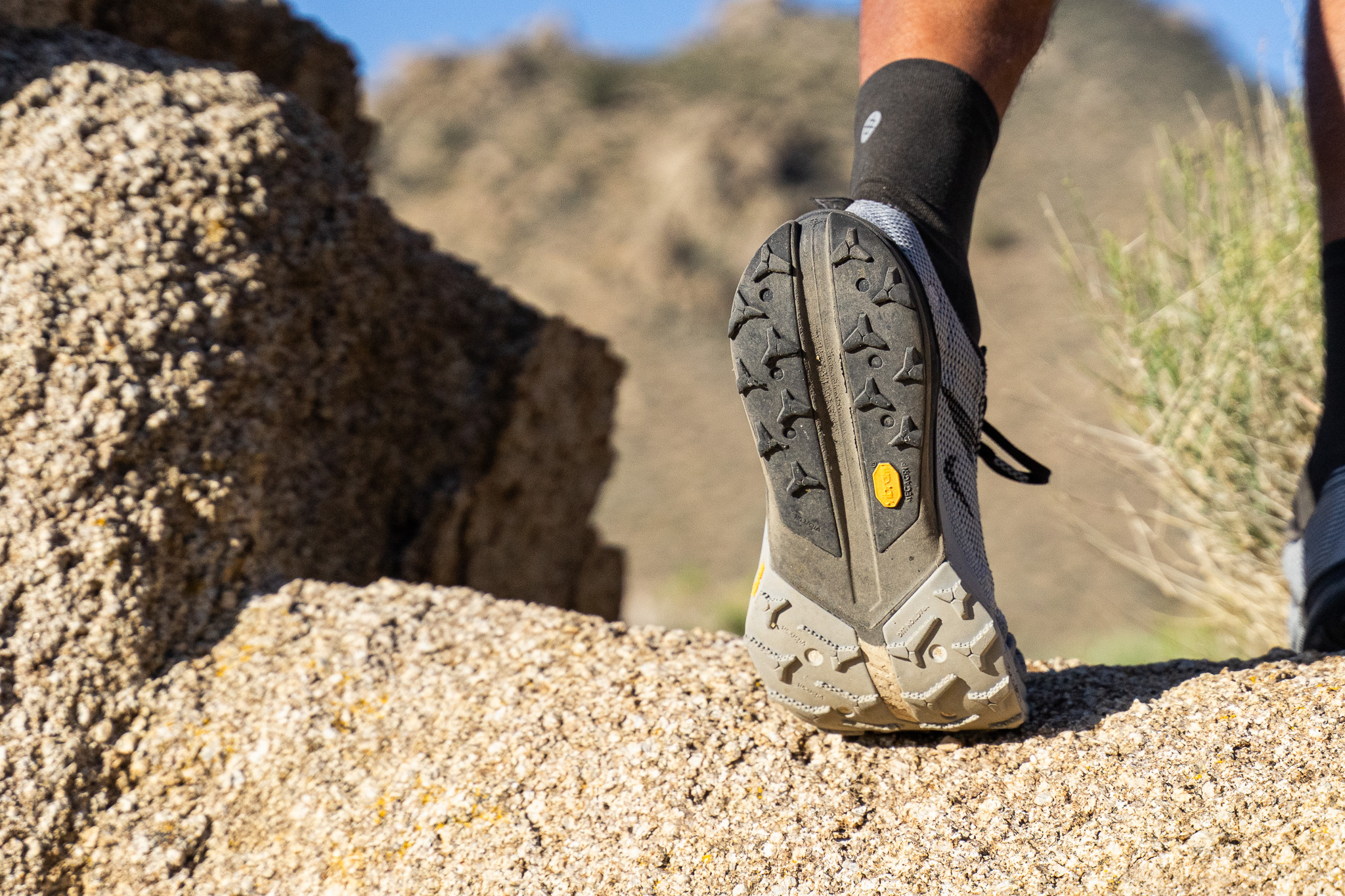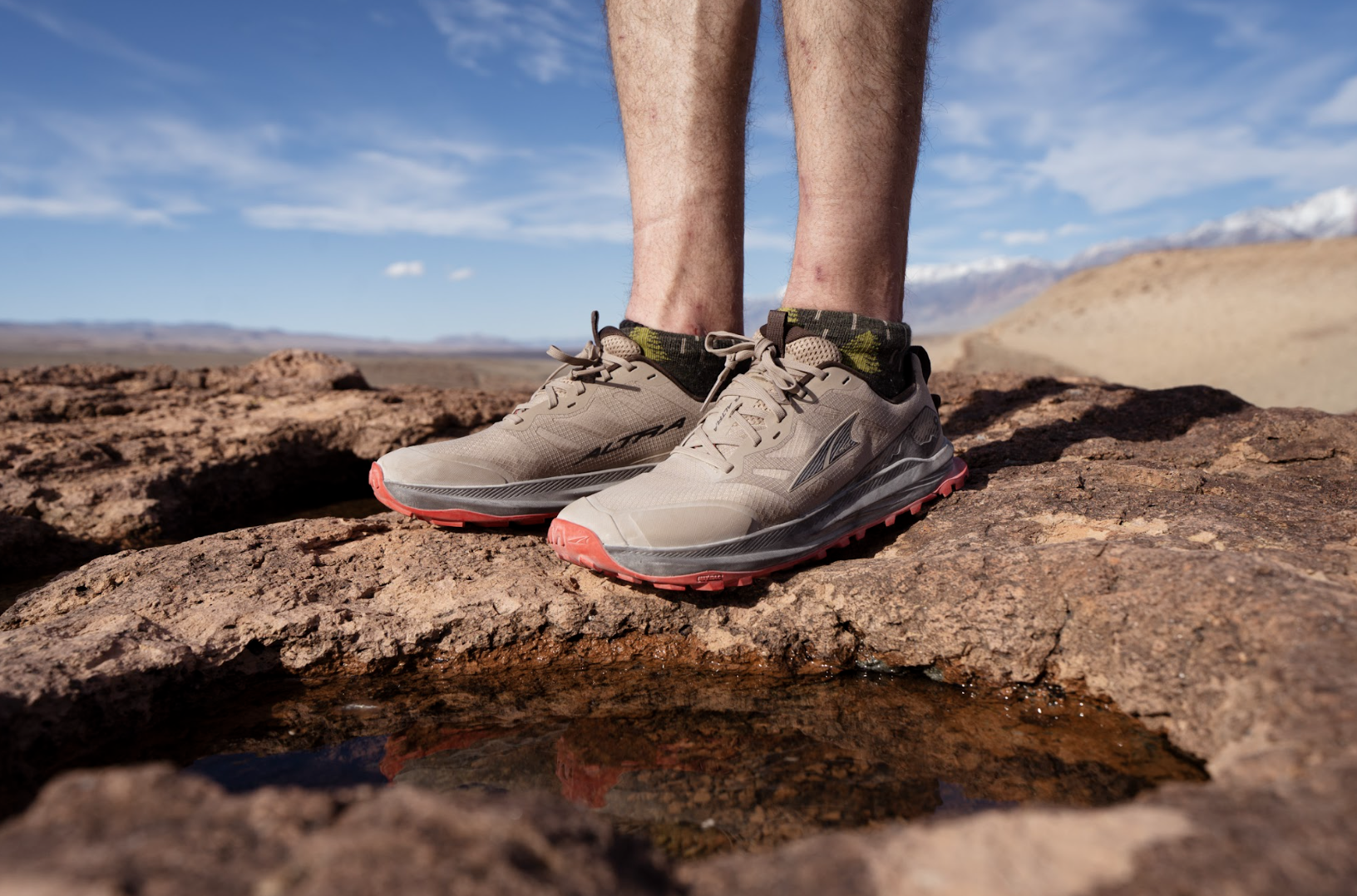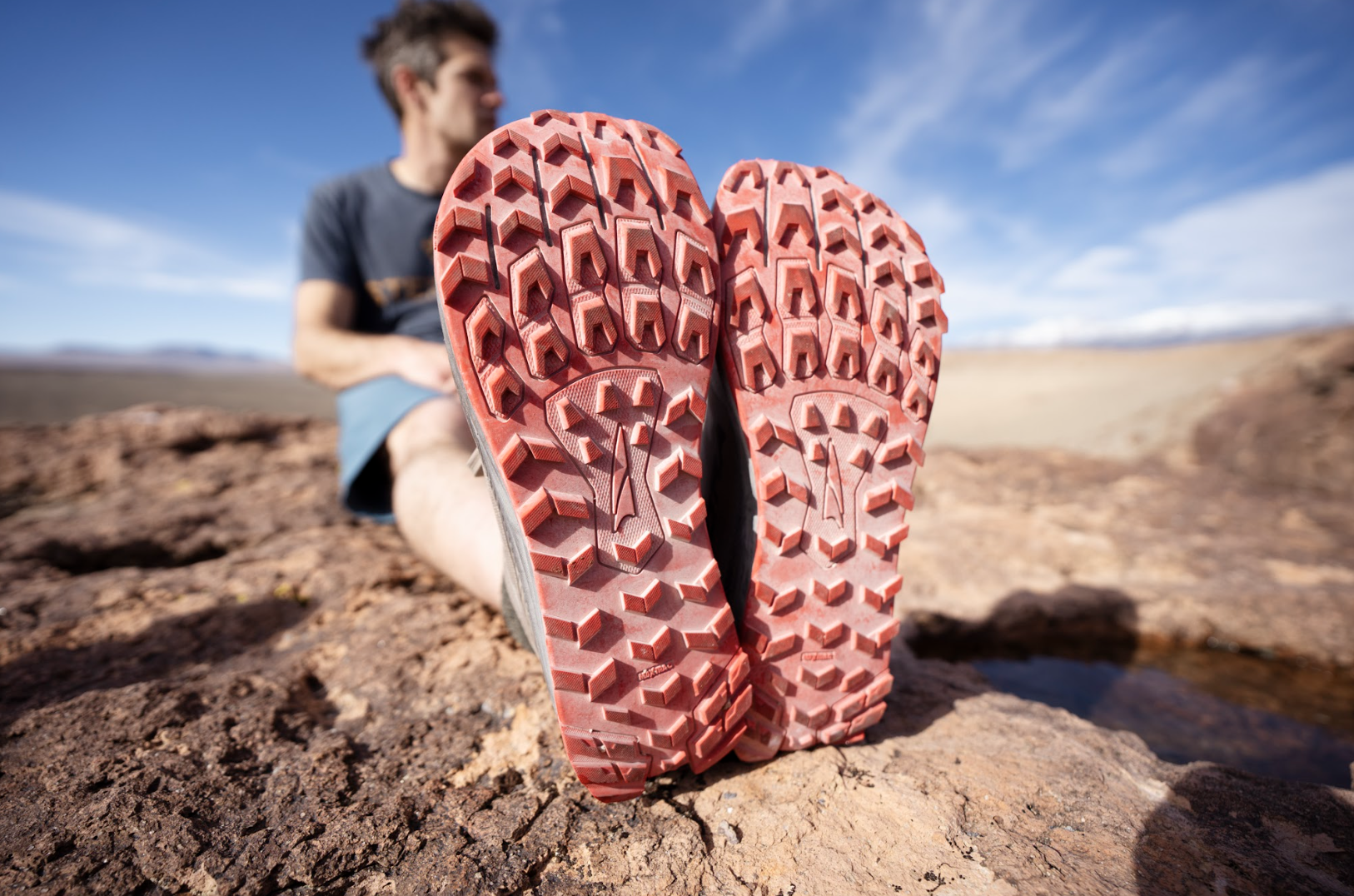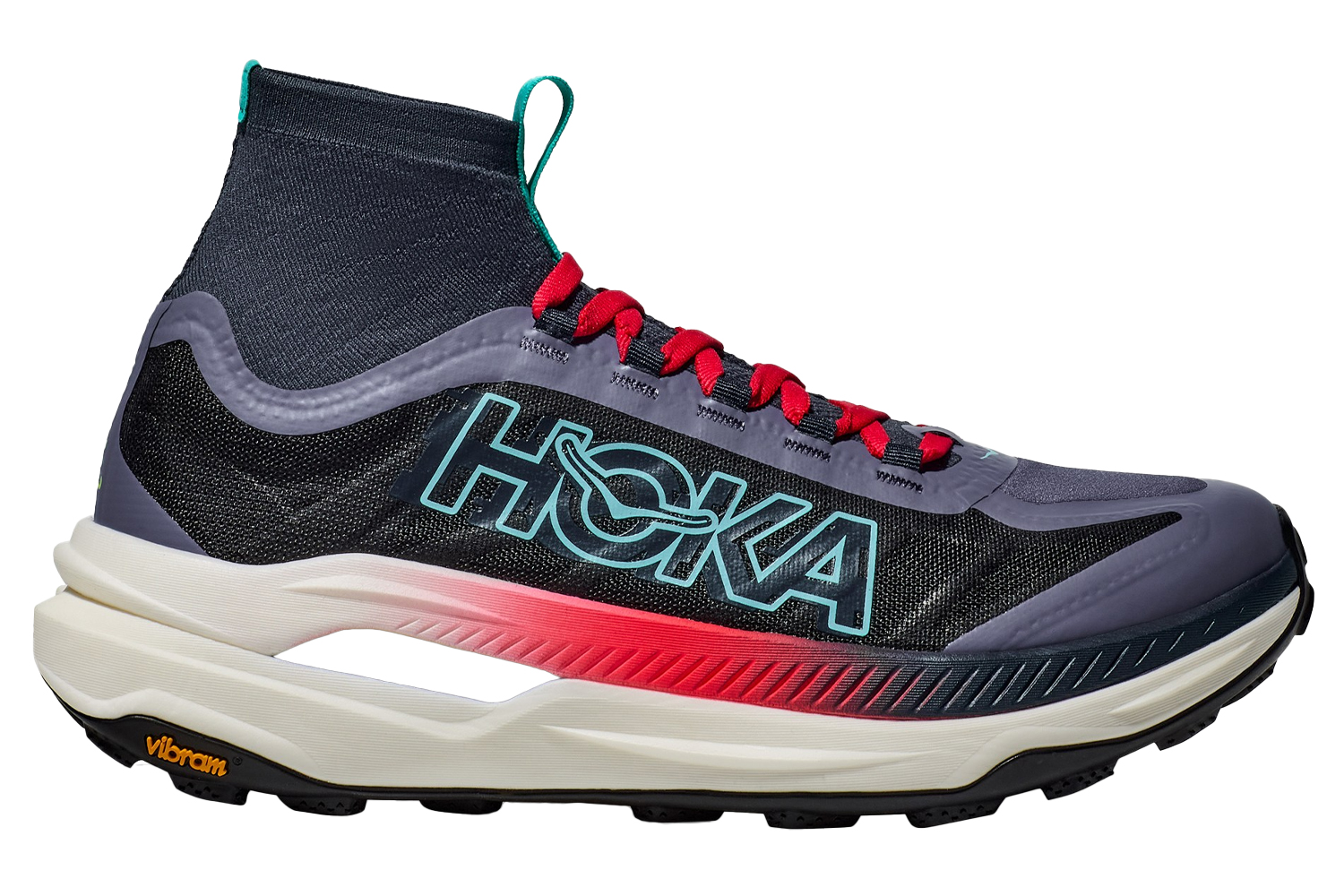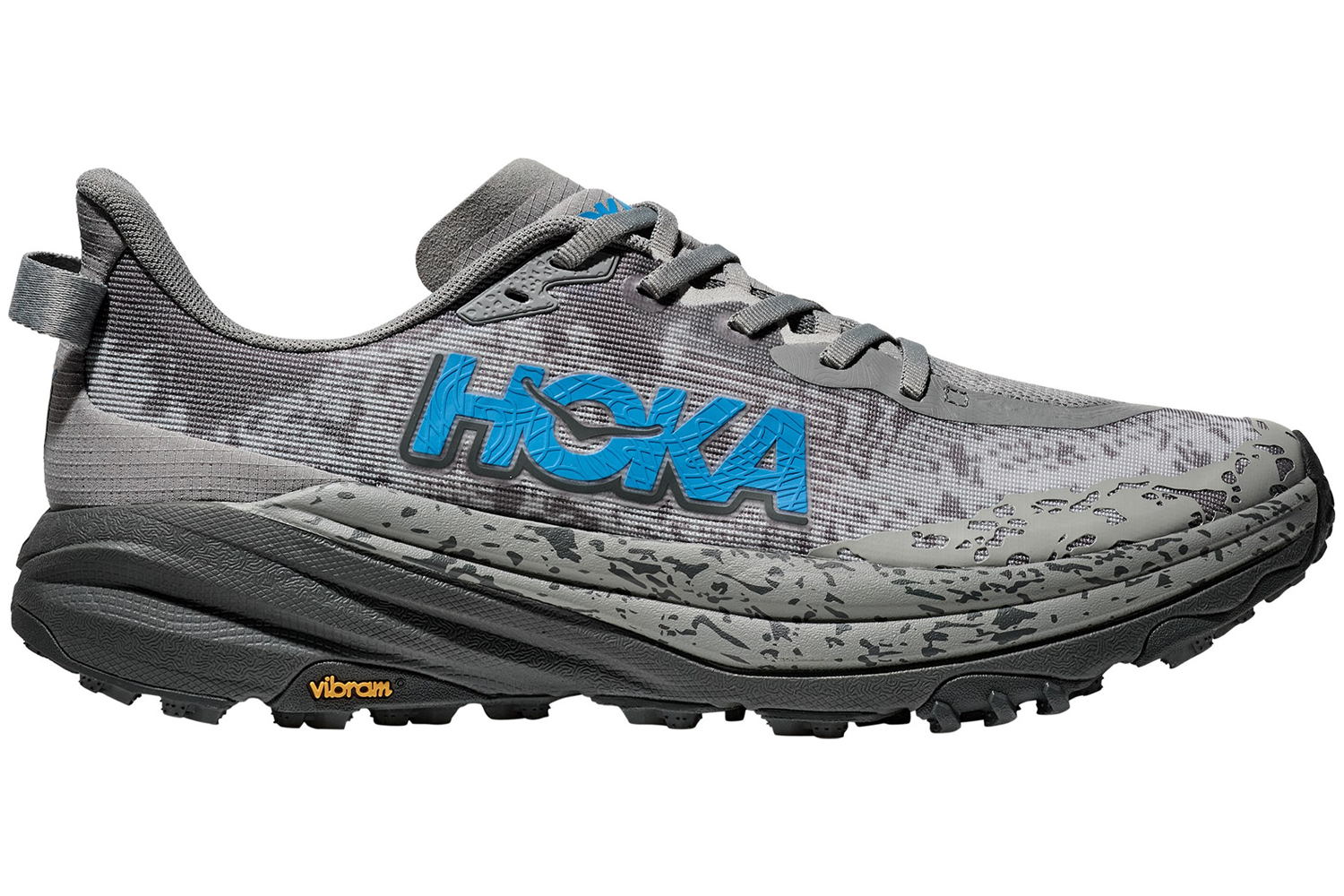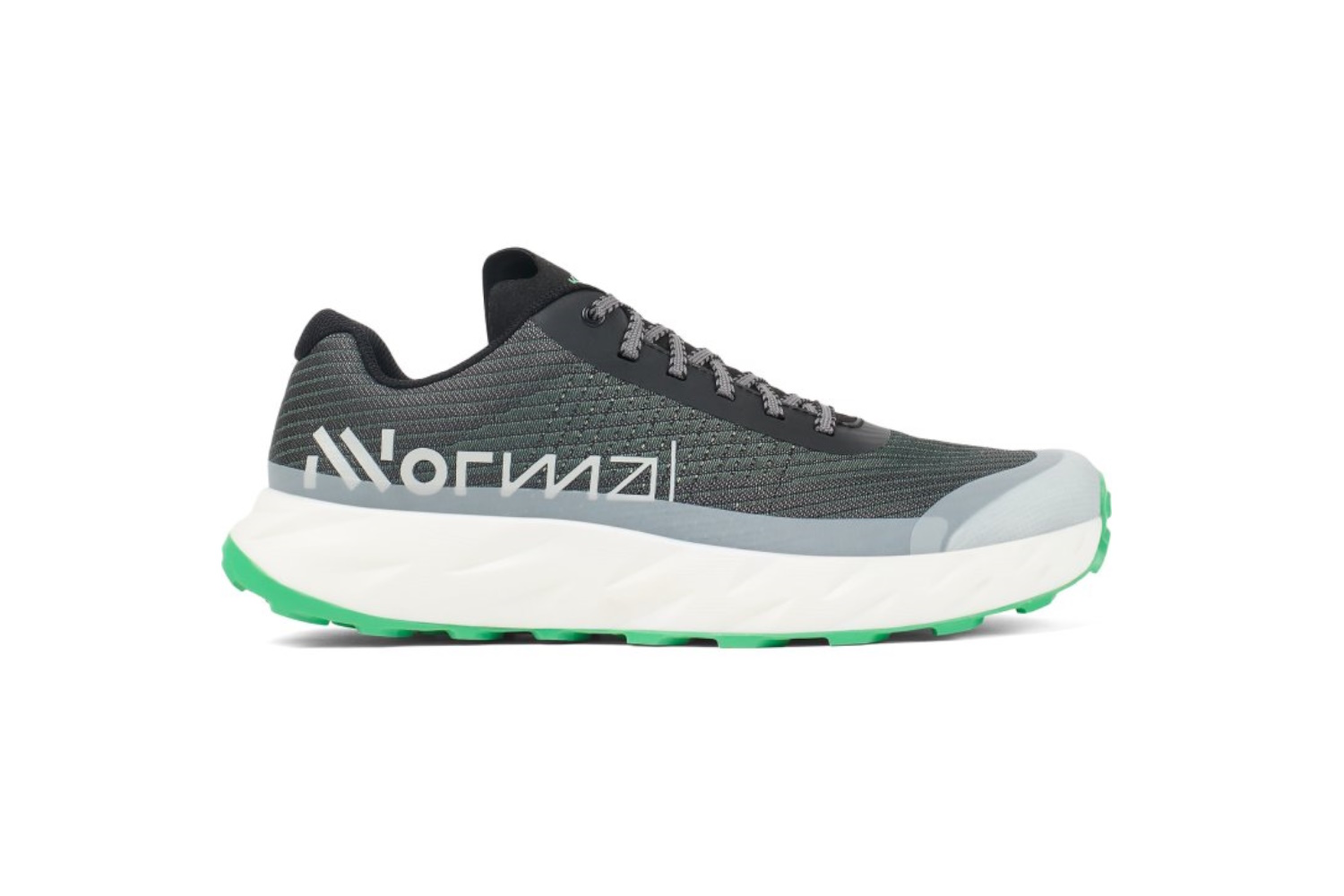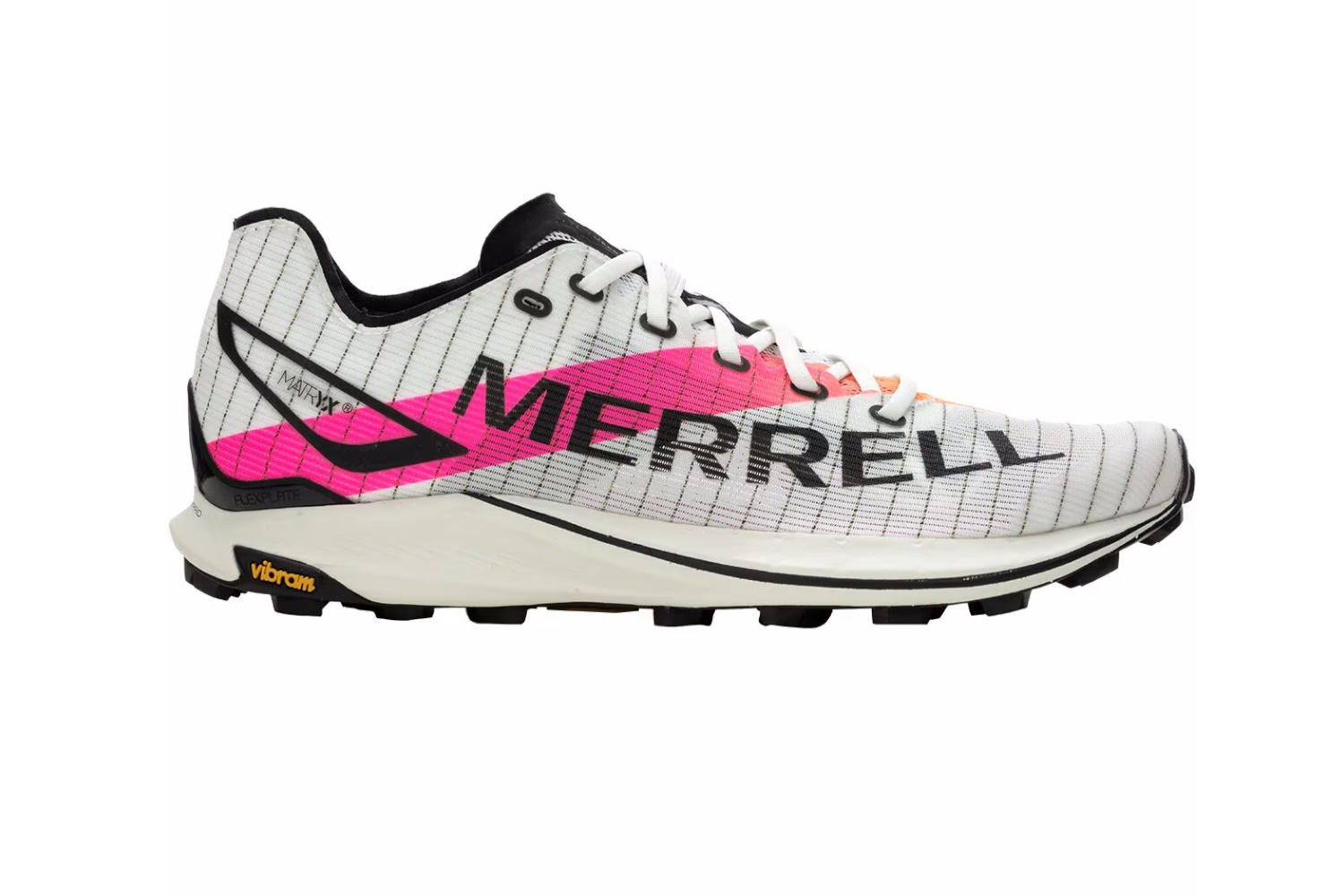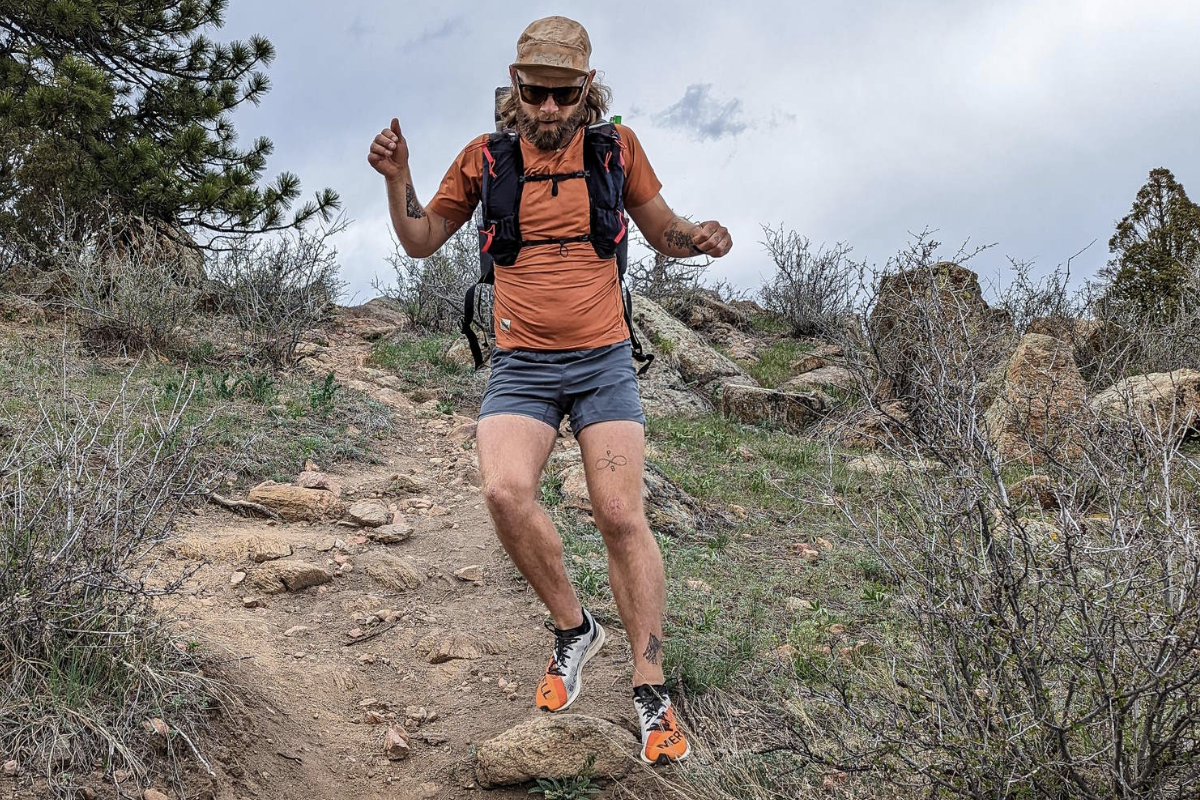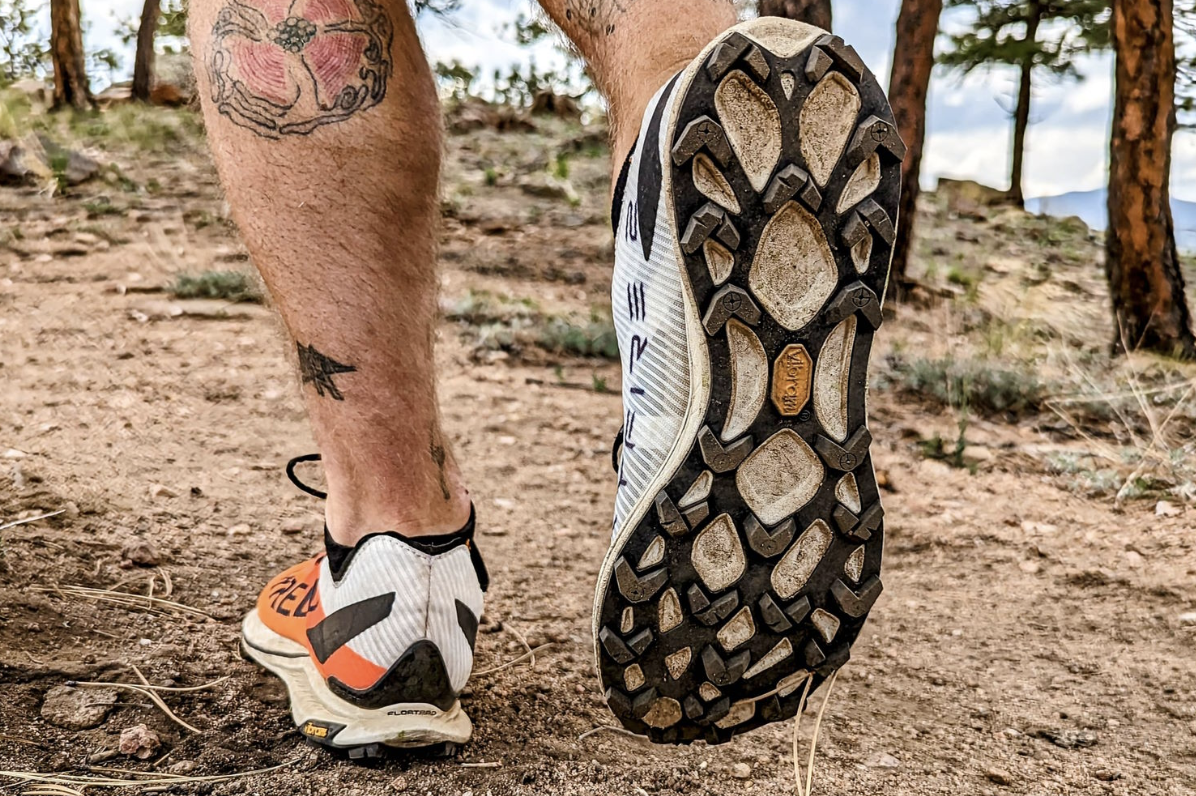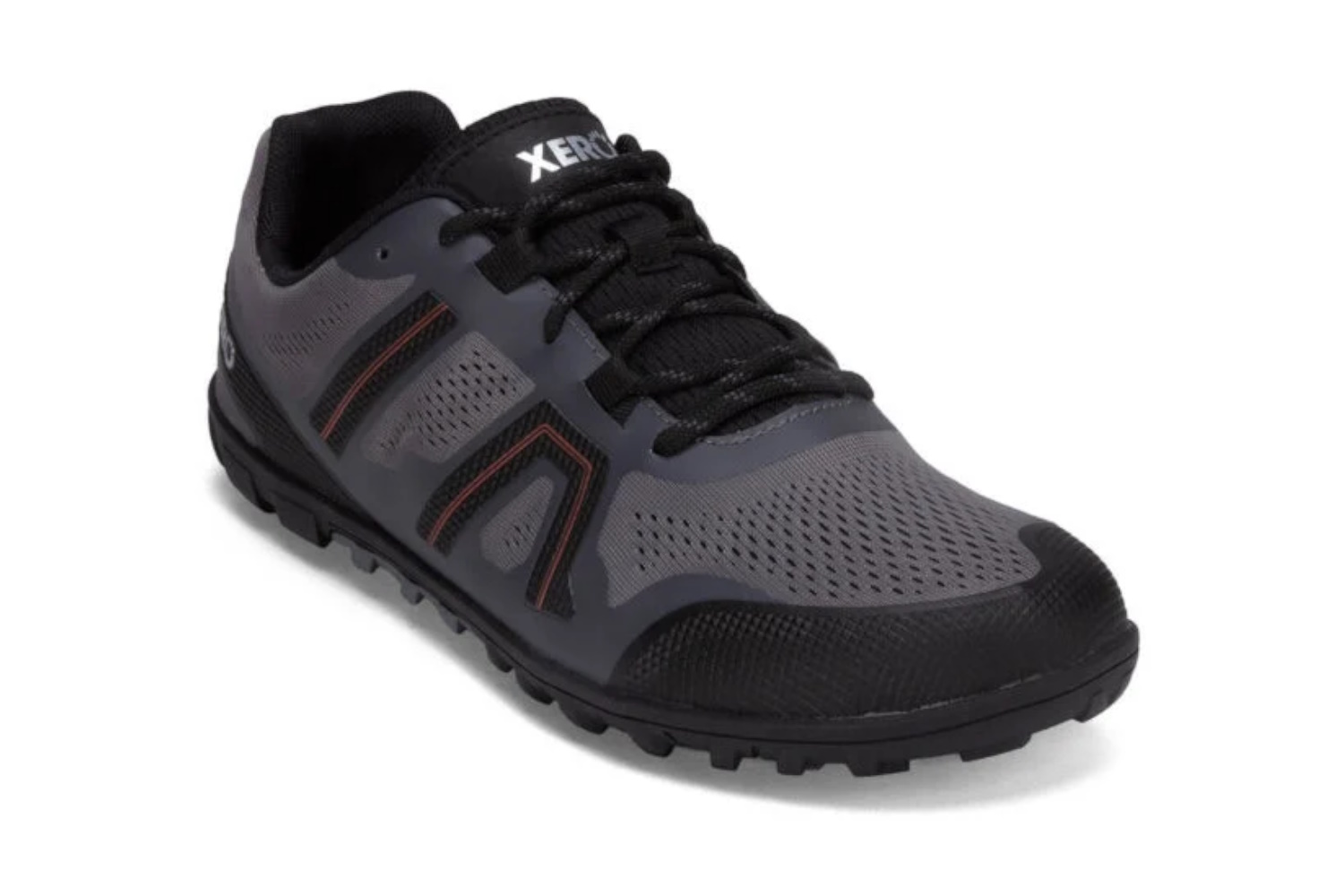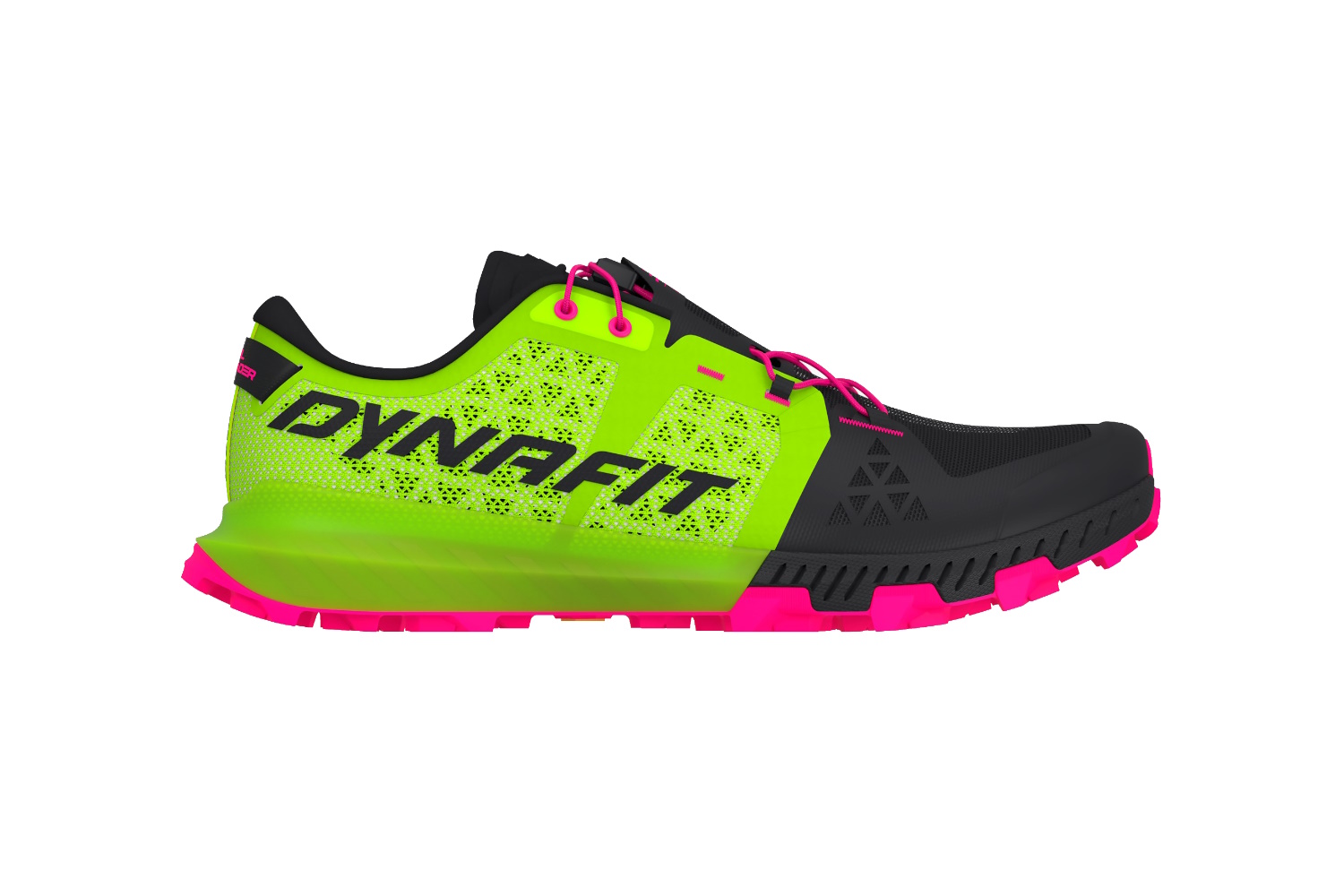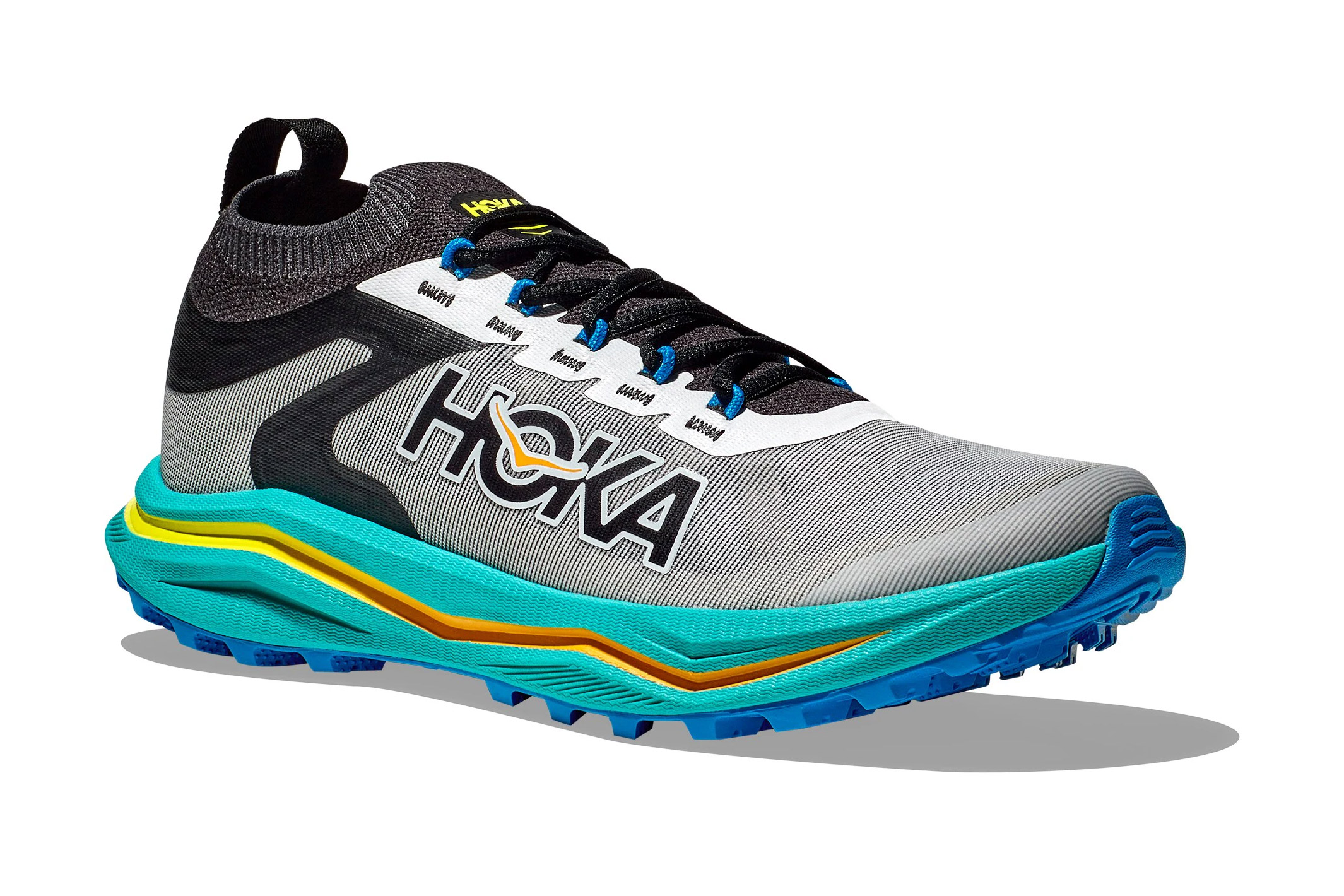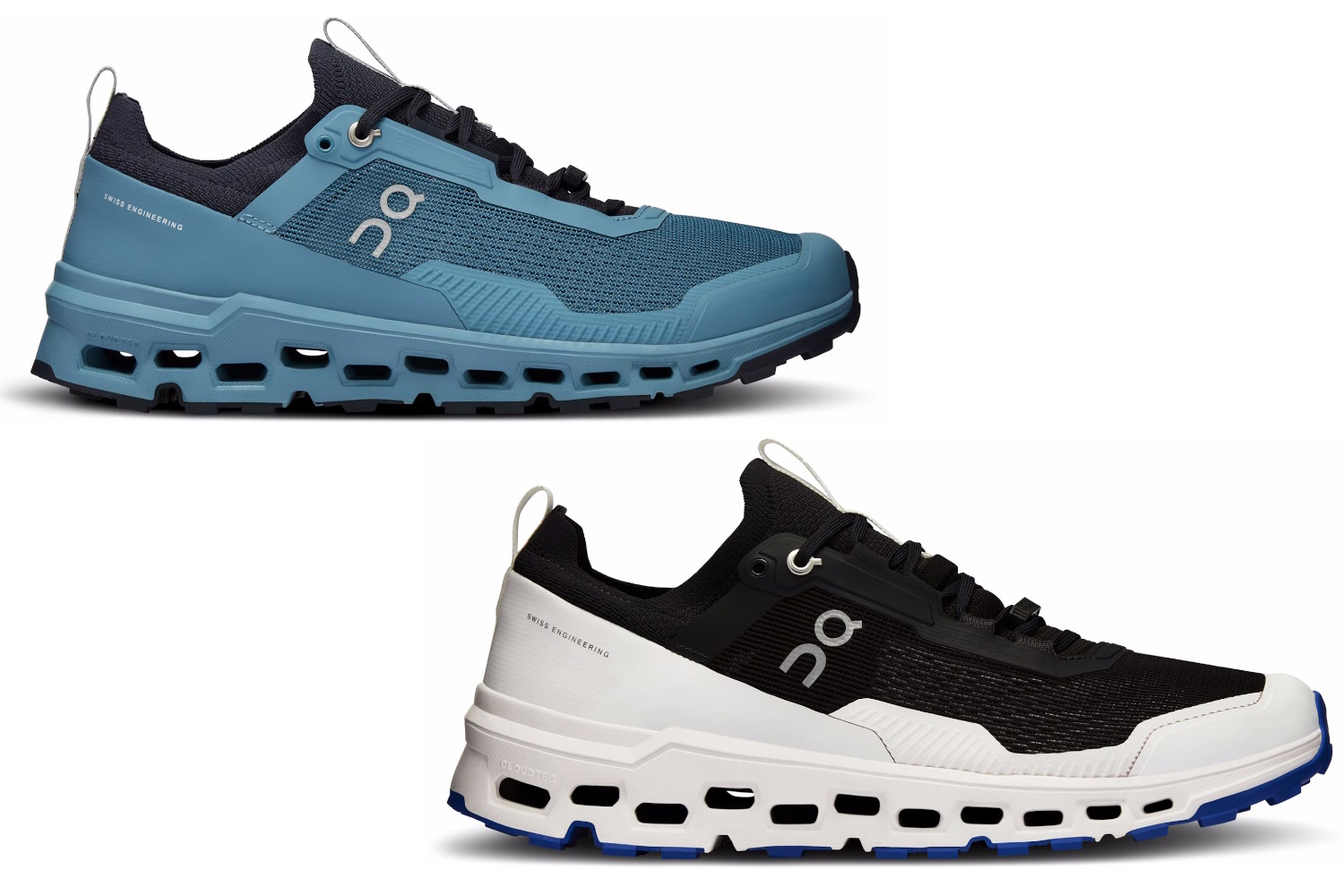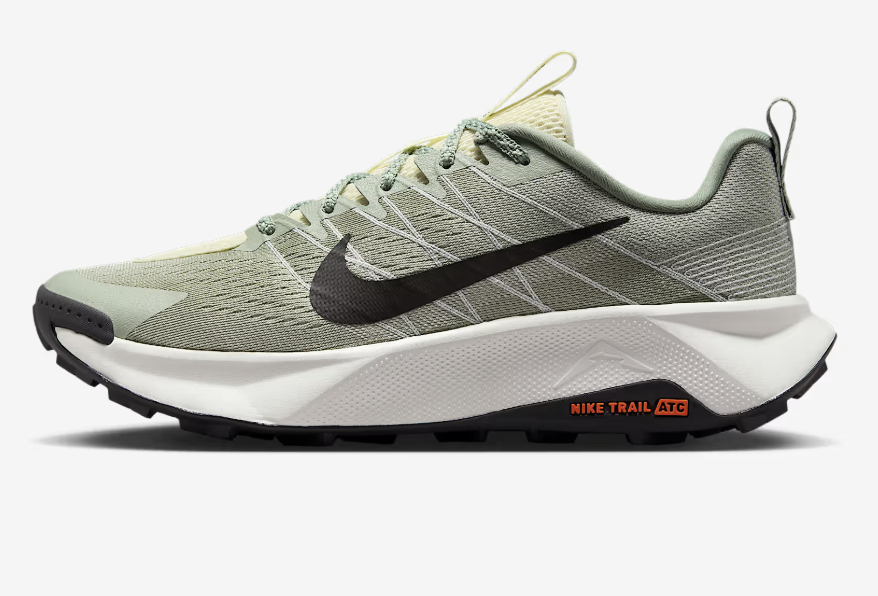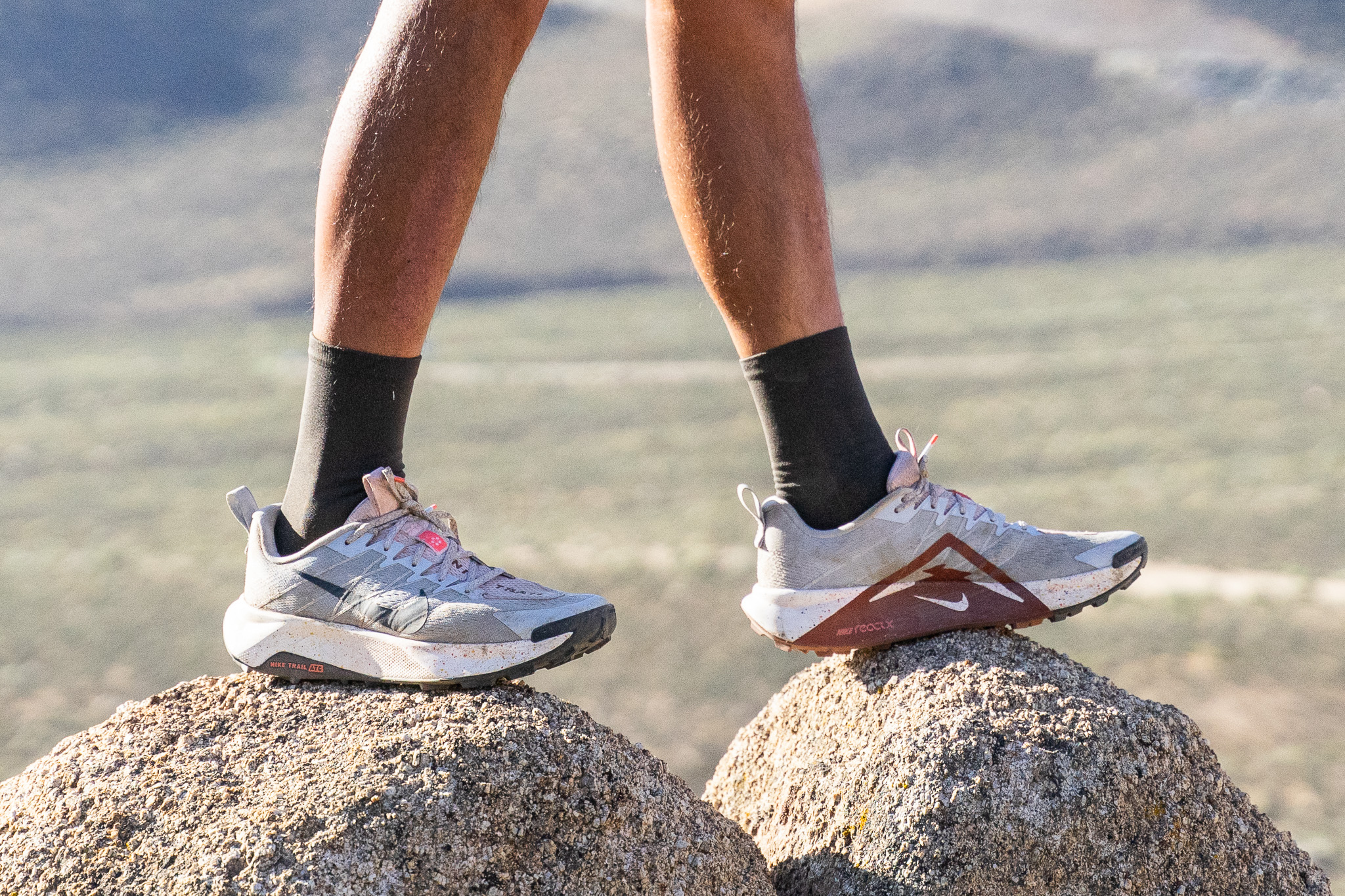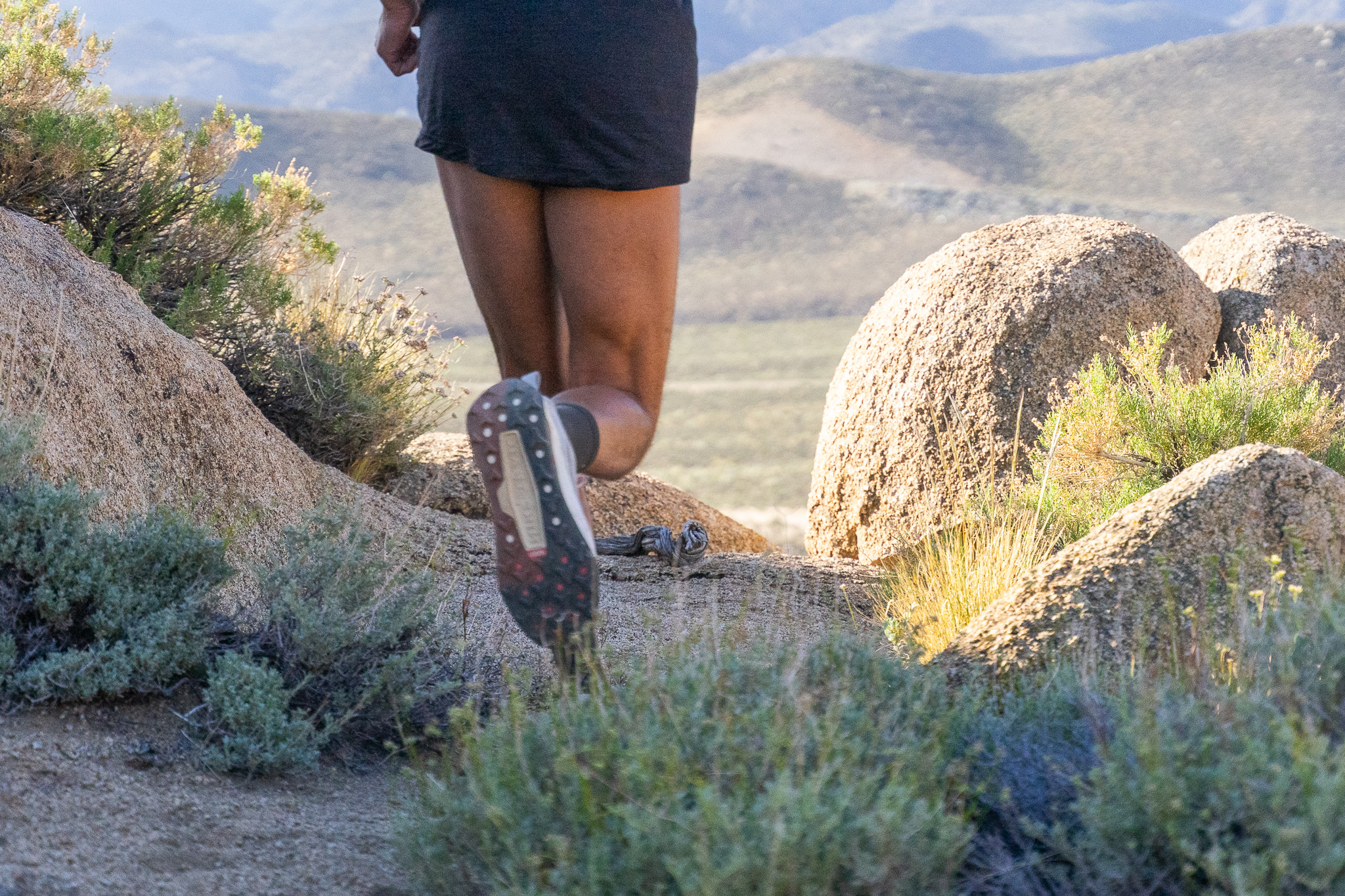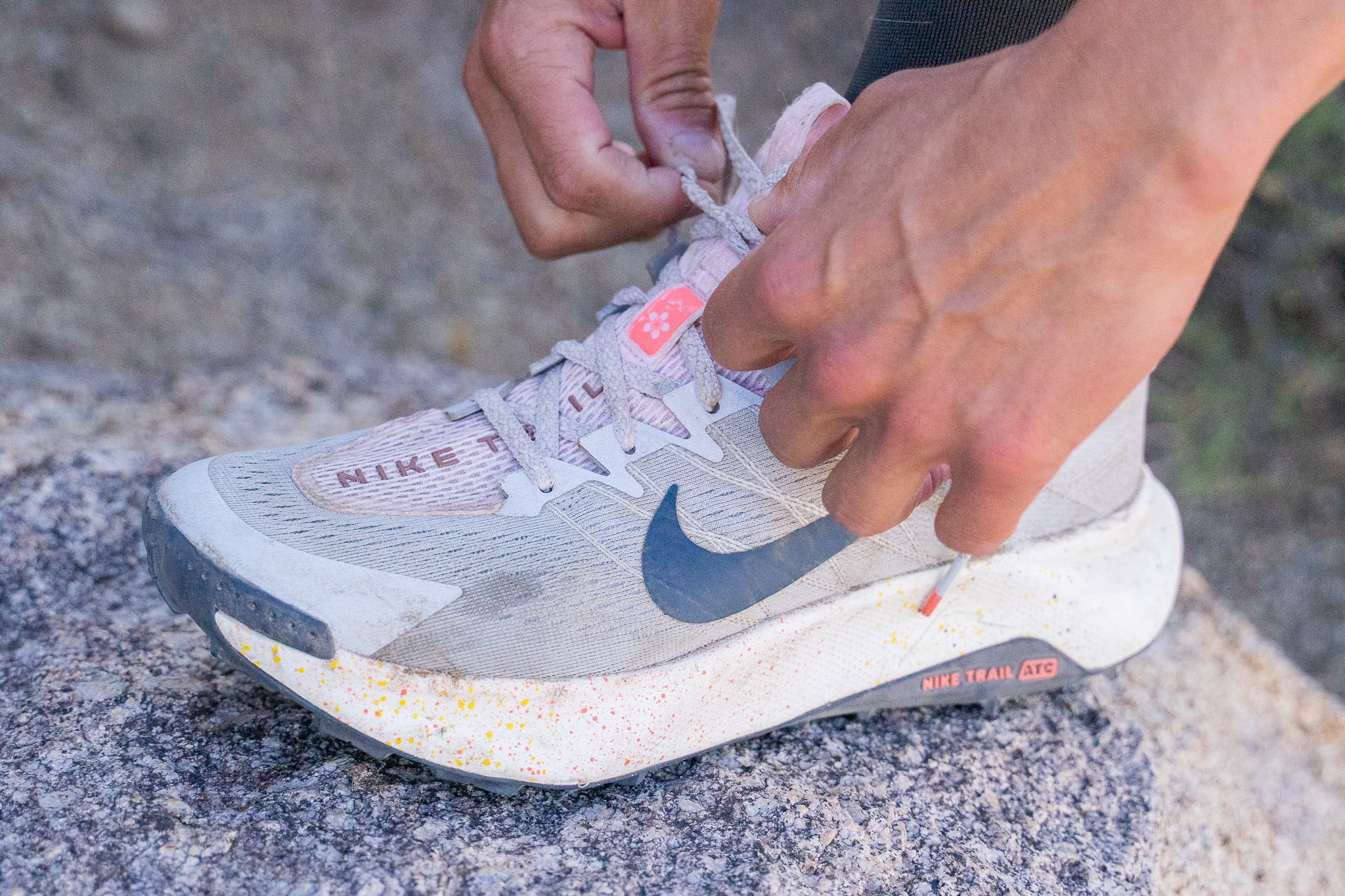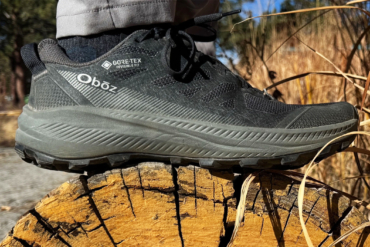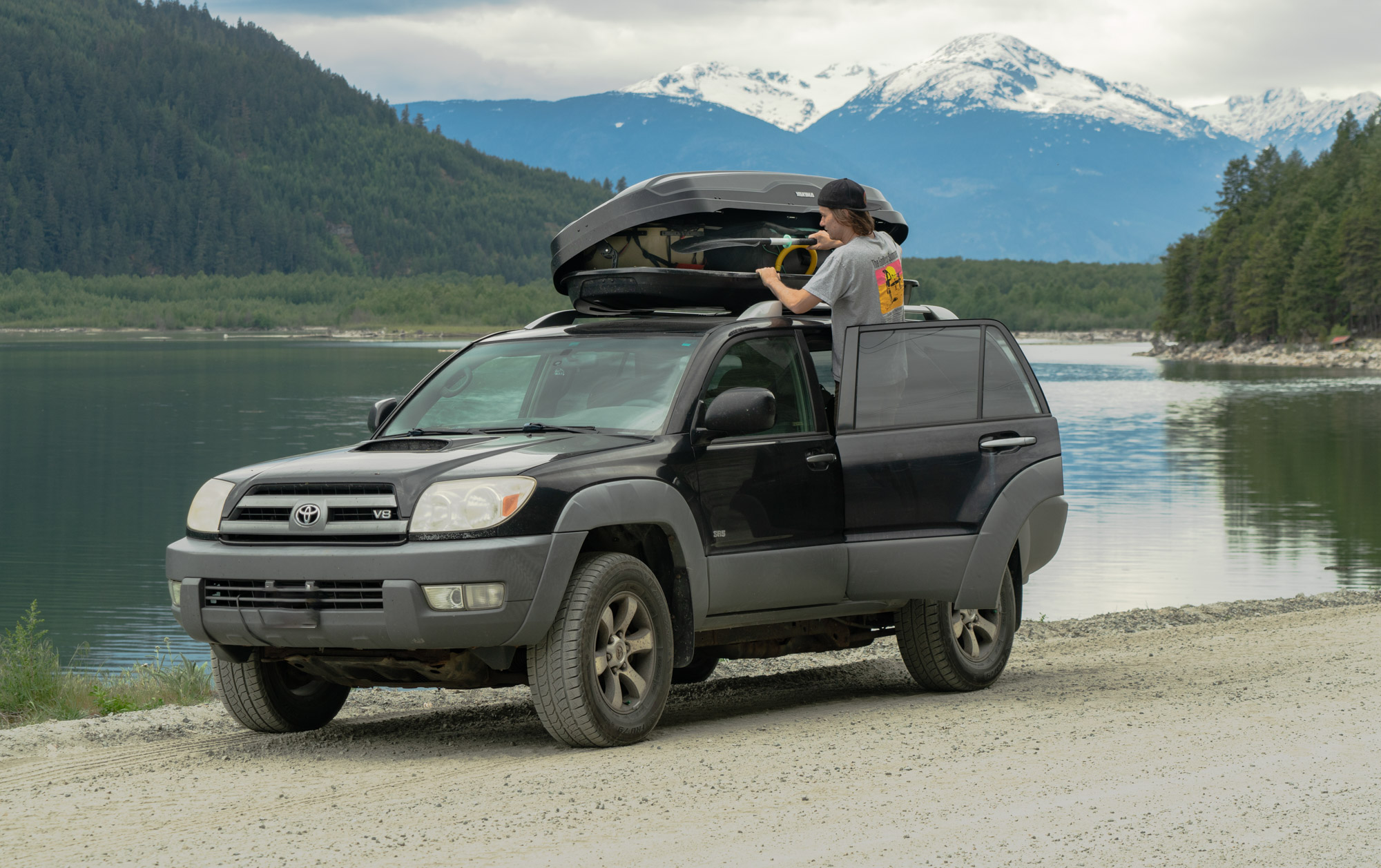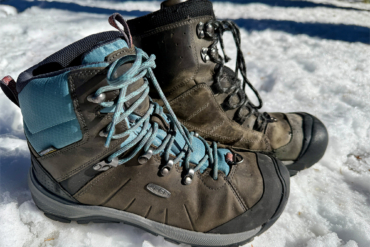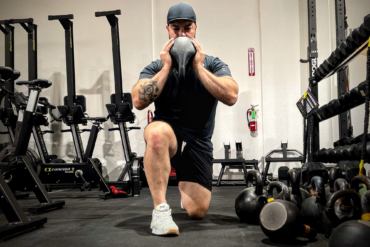Venturing off-road can provide a mental lift to your weekly routine and reap huge fitness gains. While we’ve all taken our road shoes to the trail, having the best trail running shoes will elevate your off-road game.
The perfect trail running shoe is the calculus of individual fit and the type of trail you run on. To collect feedback, we had our team of testers from across the country run in diverse terrain.
From rocky scrambles to mellow hikes to the Leadville 100, we’ve worn these trail running shoes through rain, summer heat, and everything in between. And while there isn’t a single shoe that’s perfect for everyone, we’ve categorized our top picks to help you find the best fit.
To curate this exhaustive list, our team of dedicated trail runners clocked endless miles in a broad range of conditions and landscapes to bring you the streamlined selection of fifteen shoes you see today. For our most recent update, gear-tester and contributing writer Canaan Vallejos took the latest trail runners from Nike into the High Sierra for some serious use and abuse.
Editor’s Note: Ready for the trails this summer? We updated this guide on June 5, 2025, adding reviews of the latest and greatest from Nike. The updated Nike Terra Kiger 10 makes for a great on and off-trail shoe, while the Wildhorse 10 provides plenty of cushion for pounding single track.
The Best Trail Running Shoes of 2025
Scarpa Golden Gate ATR 2
- Price: $169
- Weight: 10.2 oz.
- Drop: 4 mm
- Best for: Any trail, any terrain, any speed
Pros
- Springy and responsive midsole
- TPU exoskeleton keeps foot secure
- Versatile performance across variety of trails and conditions
- Best shoe to pack for a trip if you can only choose one
Cons
- Less aggressive lugs than others on this list
Saucony Peregrine 15
- Weight: 9.7 oz
- Drop: 4mm
- Stack: 28mm/ 24mm
Pros
- Excellent traction
- Comfortable from day one, with little to no break-in time
- Precise in technical terrain
- Great price-to-value
Cons
- Precise, narrow fit not ideal for wider feet
Salomon S/Lab Ultra Glide
- Weight: 10.2 oz
- Drop: 6mm
- Stack Height: 41mm / 35 mm
Pros
- Comfortable midsole, especially over long distances
- No rock plate, no problem
Cons
- Heavy for shoes at this price point
Nike Terra Kiger 10
- Weight: 9.1 oz.
- Drop: 5mm
- Stack: 29mm (heel) 24mm (forefoot)
Pros
- Mesh upper breathes while keeping dust out
- Has a rock plate and plenty of cushion
- Vibram Megagrip outsole
Cons
- Lugs wore down faster than we'd have liked
Altra Lone Peak 9
-
Support
6.9
-
Durability
7.8
-
Style
8.4
-
Performance
9.0
- Weight: 1 lb. 6.4 oz.
- Heel-to-toe drop:
- Upper: Ripstop mesh
- Outsole: MaxTrac rubber
Pros
- Light weight
- Wide forefoot for swelling feet
- Zero drop promotes a healthy stride
- Quick gaitor attachment points
- Good, fast trail running shoe
Cons
- Zero drop takes some getting used to and isn't for everybody
- Modest support
HOKA Tecton X3
- Price: $275
- Weight: 10 oz.
- Drop: 5 mm
- Best For: Crushing your Strava time and race day performance
Pros
- Nimble, lightweight, and fast on technical terrain
- Great balance of comfort and trail feedback
- Parallel carbon plates with winglet addition
- Excellent Matryx upper (secure and durable)
- Tacky and surprisingly durable outsole
Cons
- Narrow fit (especially in the midfoot)
- Heavier than the previous model
- Knit collar caused heel rub on some testers
- Expensive
HOKA Speedgoat 6
- Price: $155
- Weight: 9.8 oz.
- Drop: 5 mm
- Best For: Technical trails, ultras, thru-hikes
Pros
- Fantastic traction
- Lighter than previous models
- Superior cushion
- Durable
Cons
- Firmer underfoot than previous models
NNormal Kjerag
- Weight (per shoe): 8.6 oz.
- Drop: 6 mm (23.5/17.5 mm)
- Best for: Runners seeking a long-lasting shoe
Pros
- Quality build
- Balances comfort and speed
Cons
- Pricey
- Snug fit for wide feet
Merrell MTL Skyfire 2 Matryx
- Weight (per shoe): 8.6 oz. (size 12)
- Drop: 6 mm (25/19 mm)
- Best for: Sprint-level speeds on trails
Pros
- Fast, light, and grippy
- Eye-catching look
Cons
- Very pricey
Other Great Trail Running Shoes
- Weight (per shoe): 9.9 oz.
- Drop: 0 mm (14/14 mm)
- Best for: Minimalist runners
Pros
- On-the-ground feel
- Natural foot movement
Cons
- Minimal protection
- Wide, looser fit
We test dozens of trail running shoes for each iteration of this guide, and we’ve found plenty of excellent shoes that don’t fit into any specific category. Here are some more of the best shoes we tested.
- Weight (per shoe): 10.9 oz.
- Drop: 4 mm (19/15 mm)
- Best for: Race day in the mountains
Pros
- Fast & light
- Excellent protection
- Top-tier grip
Cons
- Minimal padding/support
- Might be too minimal for everyday runs
- Weight (per pair): 13.4 oz.
- Drop: 5mm (30/25mm)
- Best for: Trail races, fast trail runs
Pros
- Lightweight
- Aggressive lugs
- Responsive
- Very breathable
Cons
- Knit collar may be uncomfortable for some
- Narrow for a Hoka shoe
- Weight: 10.4 oz.
- Drop: 8 mm
- Best For: Runners who want to go far, fast
Pros
- Well engineered
- Nice looking
- Clever lace solutions including a FlipRelease providing extra room for an expanding foot over long distance
- Sock-like inner construction keeps dust and debris out
Cons
- Heavier than some of its ultra running competitors
- Initially feels firm underfoot before breaking in
- Weight: 11 oz.
- Drop: 9.5mm
- Stack: 38mm heel/ 28.5mm forefoot
Pros
- More foam and less weight than predecessors
- Nimble despite stack height
Cons
- Not very durable
- Not a good choice for frequent off-trail use
Trail Running Shoes Comparison Chart
| Trail Running Shoes | Price | Weight | Drop | Stack Height | Best For |
|---|---|---|---|---|---|
| Scarpa Golden Gate ATR 2 | $169 | 10.2 oz. | 4 mm | 28/24 mm | Any trail, any terrain, any speed |
| Saucony Peregrine 15 | $140 | 9.7 oz | 4 mm | 28/24 mm | Fast, technical trail runs, |
| Salomon S/Lab Ultra Glide | $250 | 10.2 oz. | 6 mm | 41/ 35 mm | Neutral runners who want a medium riding cushion; great for road-to-trailhead and gravel roads |
| Nike Terra Kiger 10 | $170 | 9.1 oz | 5mm | 29/24 mm | Long of trail-runs and scrambles |
| Altra Lone Peak 9 | $140 | 11.2 oz | 0 mm | 25 mm | Big days, Zero Drop |
| HOKA Speedgoat 6 | $155 | 9.8 oz. | 5 mm | 38/33 mm | Technical trails, ultras, thru-hikes |
| NNormal Kjerag | $195 | 8.6 oz. | 6 mm | 23.5/17.5 mm | Runners seeking a long-lasting shoe |
| HOKA Tecton X 3 | $275 | 10 oz. | 5 mm | 40/35 mm | Crushing your Strava time and race day performance |
| Merrell MTL Skyfire 2 Matryx | $210 | 8.6 oz | 6 mm | 25/19 mm | Sprint-level speeds on trails |
| Xero Mesa Trail II | $120 | 9.9 oz. | 0 mm | 14 mm | Minimalist runners |
| Dynafit Sky DNA | $180 | 10.9 oz. | 4 mm | 19/15 mm | Race day in the mountains |
| HOKA Zinal 2 | $160 | 8 oz. | 5 mm | 30/25 mm | Neutral runners who want medium riding cushion; great for road-to-trailhead and gravel roads |
| On Running Cloudultra 2 | $180 | 10.4 oz. | 5 mm | 30/25 mm | Runners who want to go far, fast |
| Nike Wildhorse 10 | $165 | 11 oz. | 9.5 mm | 38/28.5 mm | Gravel and single track |

How We Tested Trail Running Shoes
Steve Graepel, the primary author of this guide, has been running for 30 years. During his time on his feet, he’s clocked a sub-3-hour marathon, won the Superior Trail Ultra 50 miler, and made the first known rim-to-rim-to-rim of Hells Canyon — North America’s deepest canyon. Steve can be found lugging a backpack with a spare pair of shoes in and around the Boise foothills with his two dogs.
To complement Steve’s personal expertise, GearJunkie has a crew of five runners collecting miles and feedback throughout the year.
A fitness-focused runner who logs miles for both cardio and agility, Adam Ruggiero run-commutes on pavement daily, and adds box jumps and stairs to his regular routine. Ruggiero logs 20-25 miles a week, with mid-distance trail runs at elevation on the weekends.
Fast is slow, and slow is M.T. Elliott. A recreational runner — and our resident Clydesdale runner — Elliott prefers the crunch of dirt over asphalt but runs on both.
Sean McCoy is a middle-of-the-pack ultra runner who, when not leading the Denver-based GearJunkie team, gets lost running and racing in the Colorado high country.
Chris Carter is an avid ultra runner who is coming out of a season of constant competition in trail races along the East Coast. He can’t quite find the gumption to get into road running, but he is a trail hog through and through.
Matthew Medendorp is a trail runner constantly looking for an excuse to venture off the tarmac. He cut his trail running teeth while living in Flagstaff, exploring the high alpine desert’s steep and dusty trails. These days, you can find him in the Midwest, grinding out weekly miles over gravel and behind a running stroller (a Thule Urban Glide 2 Double, since this is GearJunkie) and diligently sneaking pre-dawn trail miles.
Stephen Regenold is an ultrarunner and multisport athlete who has completed 100+ competitive events around the world, from the NYC Marathon to wilderness epics like the Patagonian Expedition Race. He is a road and trail runner who trains year-round from a home base in Minnesota. He has been testing footwear for GearJunkie and other media outlets for over 20 years.
In 2024, we further refined this list by sending Matt on two testing trips for our trail-focused running gear (including hydration packs, vests, and winter running shoes).
The first trip was in the high desert of Northern Arizona, where he put shoes head-to-head in the ponderosa pines of Flagstaff and red rocks of Sedona, base-camping out of an Outdoorsy rental to be first on the trail each morning or facilitate a mid-run shoe change.
For the second, we sent Matt to the alpine passes of Mammoth Lakes, Calif., in the Eastern Sierra to test outsole and insulation on the frigid scree bordering Yosemite. This ensured we accurately assessed shoe performance in a variety of environments and usage occasions.
Buyer’s Guide: How to Choose a Trail Running Shoe

Staring at a wall of shoes or endlessly browsing an online retailer can be overwhelming. We’ve broken down some helpful tips to find the right shoe.
Consider Where You Run
These days, manufacturers have dialed in shoes for nearly every niche of running. A quick way to hone in on the right shoe is to identify where you run.
Road running shoes are primarily suitable for hard surfaces, with breathable uppers and smooth traction for pavement, track, and treadmills. Cushion and stability can vary (we’ll cover that more below).
Trail running shoes have an aggressive lug pattern that bites into dirt, sand, and mud. But not all treads are the same. A blocky, cleat-like tread will shed mud in the Pacific Northwest but can feel clunky on hardpack found in the Southwest and can cause trips and falls.
Trail shoes also have a more durable upper, a robust toe bumper, and a firmer sole or even a rock plate — all to protect the feet from underlying roots and rocks.
Roadrunner or trail shoe? These aren’t hard-and-fast rules. All the editors at GearJunkie run to the trailhead on the road, and we are all guilty of taking a road shoe for a spin on the trail. If that sounds like you, we’ve indicated where a shoe can cross over effectively.
Identify Your Running Gait

According to Dr. Michael Hahn, director of the Bowerman Sports Science Clinic at the University of Oregon and a specialist in neuromechanics and human locomotion, “Everybody has a natural gait, and it leaves a thumbprint on your shoes.”
To get an idea of how you run, flip your shoes over and take a look at the wear pattern on the soles.
- Neutral pronation shows a wear pattern that scuffs the outside of the heel and the ball of the foot. A neutral shoe will probably be your best bet.
- Overpronation shows wear along the inside edge of your shoe (meaning your feet are rolling off the big and middle toes). Hahn added that “people with low arches pronate and that can poorly load joints up the chain.” A stability shoe may help, “but don’t overdo it. Just find a comfortable shoe that feels good and naturally supports the foot,” adds Hahn. That is, learn to listen to your body and buy accordingly.
- Supination, or underpronation, is identified by long wear patterns along the outside edge of your shoes (caused by the feet rolling out). It can also be caused by inflexible, rigid, or high arches. Typical wear patterns will show light wearing on the outside of the heel. Supination is more drastic rolling outward, cupping inward, and is less common. But the evidence is pretty clear. “It always comes down to cushioning,” shared Hahn. If you supinate, “the number one thing you can do is buy a cushion shoe.”
Stack and Drop

Unless you’re running barefoot, every shoe has a stack. Measured in millimeters (mm), the stack refers to how high the insole sits off the ground.
Shoes with more cushion inherently have a higher stack. Furthermore, most shoes have a “drop” in stack height from the heel to the toe. Zero drop refers to a shoe whose toe and heel stack are the same measurement. Zero-drop shoes mimic a more natural, “barefoot” running feel. Both Altra Lone Peak 8 and Altra Timp 5 are zero-drop shoes, but have different stack, and thus a very different feel.
The lower the stack, the closer you are to the ground, and hence the lower your center of gravity. Lower stack shoes, like Nike’s Terra Kiger 9 or Topo Athletics MTN Racer 3, may feel more “racy,” faster, and better equipped to tackle technical terrain.
If you’re new to running or younger, experts recommend a lower heel drop. It builds a wider range of motion and strength, which makes you a healthier runner overall.
For experienced runners who grew up on a generation of high-drop shoes, your legs will appreciate a more judicious stack.
Cushion
Stepping into a high-cushion shoe can feel like walking on a cloud. Those running longer distances (or who supinate) will prefer more cushion to damp the repetitive pounding and provide support. But it can become a penalty. Extra foam adds extra weight.
So, is more cushion better? Not always. It’s about finding the right balance between speed and comfort. If you’re aiming for a new PR, look for a light, stiffer shoe with a harder cushion and minimal lug friction. Hoka’s Tecton X 2 provides a fantastic combination of cushion and weight.
Stability
Stability has drastically changed over the last decade. Bob Coll, owner of the Eugene Running Company, ranked as the top running store in Oregon by Runner’s World, explained that “shoes have become more homogenous. Today’s neutral shoe is just as stable as the best ‘stability’ shoe from 10 years ago.”
The gap between neutral and stability has narrowed. “And the approaches to stability are different,” added Coll. “Max cushion shoes, like a Hoka, use more cushion to seat you deep in a saddle surrounded by foam.” And The North Face wraps its TPU plate outside the shoe to help serve as rails for a neutralizing stride. Regardless of labeling or engineering, the best shoe is the one that feels natural to the N of one: you.
Rock Plate
To help buffer the feet from rough trails, some shoes embed a firm, protective “rock plate” in the midsole. Made from plastic, or in more expensive models, carbon, the flexible plate protects the feet from getting banged up on sharp rocks and repetitive pounding on erratic terrain while adding some spring to the step. A good rock plate will work with the shoe without compromising flexibility or cushion.
Flexibility

Flexibility is your friend on the trails. Trail running shoes need variability to match the variable terrain. Not all shoes are created equally flexible, and different runners prefer different degrees of flexion.
Mountain runners who frequently find themselves bounding over loose scree or uneven, sludgy terrain may want a slightly stiffer shoe to instill more confidence, while those cruising over mellow singletrack or rolling backroads may lean toward greater flexibility for all-day comfort. If you’ve already developed a personal flexibility preference over many years and miles, it’s wise to stick to your guns.
Most trail runners prefer a shoe with a firm outsole and comparatively less cushion, with a firm toebox to push off of. This allows you to feel more in tune with the undulations you come across on trail, and affords a more stable, secure stride. Some flexibility and torsion can help the foot adapt to the trail and prevent injuries like a rolled ankle.
Waterproofing

For most trail running, we prefer a shoe that breathes well. Waterproof membranes will cause your feet to sweat faster than the waterproof membrane can keep up. This leaves your feet wet, clammy, and exposed to hot spots.
Obvious exceptions include really muddy or snowy trails at ultra lengths and cold, wet conditions. To see our pick for waterproof trail runners, give our winter running shoe buyer’s guide a look.
Breathability
In general, we prefer a breathable upper that allows cooling air to flow in, and hot sweat to move out. The compromise is keeping dirt and grime out of the shoe. Porous mesh uppers, like those found on The North Face Vectiv Enduris 3, will let more cheat grass and sand particles to ingress.
Materials
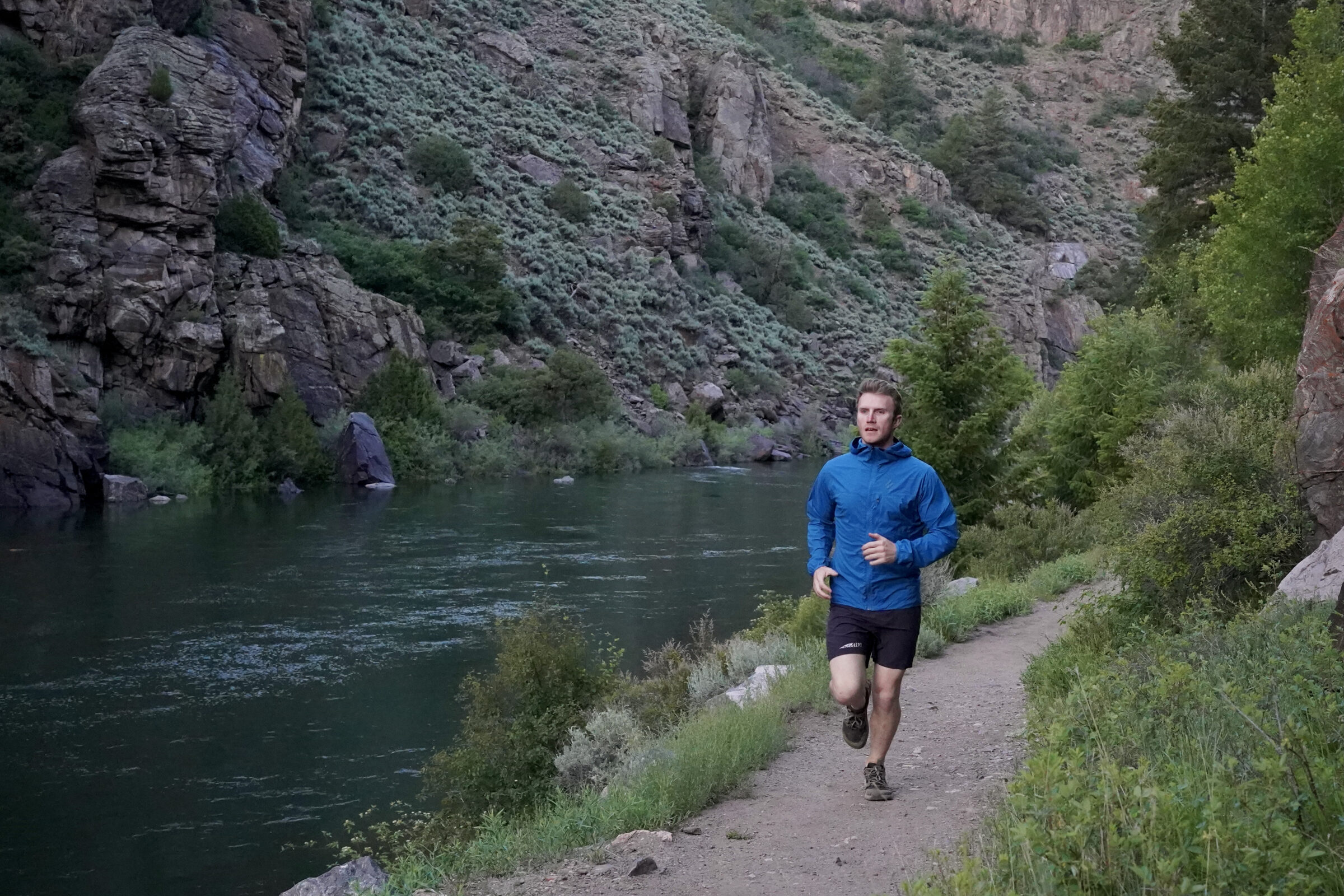
Most trail-ready shoes are constructed from a synthetic upper mesh. Materials can be simple weaves or complexly engineered, adding more durability and better breathability in different zones on the upper.
Added materials overlays and rubber rands (like those found on Salomon’s Pulsar) provide protection and deflection but will reduce airflow in a shoe. The best apply overlays that strike a balance of support, breathability, and weight. The rougher the trail, the more protection you’ll need. For optimal protection, it’s tough to beat the NNormal Kjerag.
Runners looking for a PR will likely want fewer materials. It’s a decision that cuts both ways. You drop the weight but have to open the wallet a little more. To keep the weight down, manufacturers start adding more expensive materials, like carbon plates. With minimal protective overlays, these welterweight trail runners may not last as long as a more robust shoe.
Lastly, dark-colored material will soak up more solar heat than lighter-colored material. We don’t mind this in winter, but it may sway your choice if you run in hot, sunny regions.
Lugs & Traction

Compared to road running shoes, trail runners will want grippy soles to navigate the slick, uneven, rocky, and muddy terrain. Look carefully at the trails you plan to run. If they’re mostly covered with stones and hard dirt, a short lug pattern will be great.
Those who run on lots of muddy or soft surfaces will appreciate a deeper lug pattern. 4-5mm lugs are best for most trail runners. The loamier the trail, the more you will appreciate deeper lugs. Anything more than 6 will start to feel cleat-like, making hard-pack less fun and road downright unbearable.
Lug patterns will also vary across brands. Salomon’s Pulsar uses narrow, mud-shedding treads that dart from toe to heel. Many shoes use a multidirectional patterned lug that provides breaking traction (under the heel) and gripping traction (under the toes).
Outsole compounds vary from soft to hard rubber, and choosing the right lug material depends on where you run. Softer blends will provide better grip and traction on harder surfaces and run better on the road, but they will wear down more quickly. Harder lugs feel clanky on hardpack and can cause tripping hazards in rock, but they bite down into mud like crampons.
The best traction on the list is Speedgoat 6. Made from Vibram Megagrip rubber, the multi-directional 5mm lugs are cut to create arrowhead-shaped barbs. The result gives the lug more gripping surface area and an impressive amount of traction.
Weight

Running shoes should be as light as possible while still offering the protection you desire. This matters both for the fast runner as well as the ultra-distance runner, where those added ounces add up over the day.
Anything over about 12 ounces (for a men’s size 9) is just too heavy. Lighter is better, but lightweight shoes tend to wear out more quickly than thicker, more overbuilt shoes.
Price & Value
Budget
For trail shoes on a budget, you’re looking at spending anywhere from $120 to $140. Of course, you can double up saving by shopping past season models or holiday sales, but for full retail value, $120 is our bottom market. For this range, we like the Saucony Peregrine 15 ($140), which has a good mix of support and traction but won’t break the bank.
At this price range, you sacrifice some of the more trail-oriented tech like GORE-TEX waterproofing or Vibram outsoles. If you’re a serious trail runner, you’ll want to jump up to the mid-tier range. But if you’re just getting your toes wet, this is a great entry point.
Mid-Tier
Mid-tier shoes sit squarely in the $140-190 price range. Our top pick, Scarpa’s Golden Gate ATR 2, sits directly in the middle of that range at $169, while our favorite mountain running shoe, the HOKA Speedgoat 6, is a great better value at $155. This is the sweet spot for most consumers — you’ll get a versatile, technically capable shoe showcasing some of the best tech available.
We’ll get into this later, but trail shoes have yet to make the space-age leap that road shoes have in the year of the super-shoe. Most brands don’t shirk on bells and whistles for this price range. You’ll see rock plates, premium tread materials like Vibram MegaGrip, and other proven performers.
You’re not losing much by not spending more. The ceiling is still firmly on the trail shoe market, though we expect that to change by 2025. You won’t get carbon in this range, but that tech has limited trail benefits for the everyday runner anyway.
Premium
Trail shoes haven’t quite caught up to the marathon super-shoe boom, but they’re coming. HOKA’s Tecton X3 jumped the price ceiling from $225 to $275, a meteoric leap that signals industry tailwinds. For trail shoes, premium prices are in the $190-275 range, with a few brands like Speedland even pushing a little higher.
For our money, the best product in this range is the HOKA Tecton X3. The Tecton X3 is a highly engineered shoe built for speed with excellent energy return, thanks to the addition of parallel carbon plates. You also get a great Matryx upper and an extremely tacky Vibram MegaGrip outsole with 4mm lugs.
What is the sweet spot for most people?
Keep it simple and keep it mid-tier. Come next season, we may see an explosion of tech in the trail shoe space that will push runners into higher price brackets. For now, there’s a reason our top pick of Scarpa’s Golden Gate ATR 2 is in the mid-tier price range. Reliability is important for trail runners, and shoes in the mid-tier range are versatile and dependable performers capable of setting FKTs.
Frequently Asked Questions
With so many options to choose from, it can be challenging to choose the right trail shoes. Here are three things to consider as you shop:
- Set realistic running goals. If you dream of running a 100-miler one day, but realistically will use the shoes for 5-mile training loops around your local park, buy shoes for the latter use first.
- Consider shoe width. For folks with wide feet or those running very long distances, a wide forefoot can be a bonus that lets toes splay. The downside is that wider shoes are less precise, can be a little more clumsy, and won’t fit well on people with narrow feet.
- Test out the tongue. Does it fit comfortably? Will it keep rocks out of your shoe?
The life of a shoe depends on a variety of factors, including running style, weight, and how often they’re used. But in general, 300 to 500 miles is a good rule of thumb.
So if you run 10 miles per week, your shoes could last 8 months to a year. If you’re logging 20 miles per week, plan on replacing your running shoes every 4 to 6 months.
And if you see excessive wear patterns, holes, and tears or notice a decrease in footbed comfort, it’s probably time to grab a new pair of sneakers.
You can certainly run anywhere in your trail shoes or bring your road shoes trailside. That said, most find the aggressive lug pattern of a trail shoe uncomfortable on pavement. Hard surfaces like cement or pavement also quickly wear down the sole of a trail running shoe.
If your runs require a short amount of road to get to your trail, you’ll be fine in most of the shoes we’ve listed. Some brands offer hybrid road-to-trail offerings.
If you plan to run mostly on roads, it would be better to get a dedicated road running shoe.
We have seen a big shift on the trail from hiking boots to lighter-weight shoes, including trail running shoes for hiking. Trail running shoes offer up excellent traction in a lighter, more nimble package.
While many backpackers still prefer a boot, we know thru-hikers who make major miles in trail running shoes. If you’re looking for something in between, it’s worth considering a hiking shoe.


The Best Hiking Shoes of 2025
We tested and ranked the best hiking shoes for men and women for 2025, including top picks from Hoka, Salomon, Merrell, SCARPA, and more.

The Best Running Shoes of 2025
We tested the best running shoes of 2025 with options for every budget. Top picks include Craft, HOKA, Brooks, and more!


